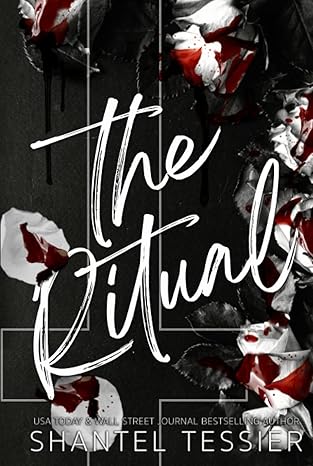Creating chemistry between characters is one of the most vital aspects of writing a believable romance. The connection that sparks between characters can captivate readers, making them root for the couple to overcome obstacles and find love. In this blog post, we will delve into the essential elements that create chemistry, focusing on character flaws and strengths, the role of conflict and resolution, and the importance of authentic dialogue. By examining these components, we can learn how to craft engaging romantic relationships that resonate with readers.
Understanding Chemistry in Romance
Romantic chemistry is often described as an intangible spark that ignites between characters. However, it is not merely about physical attraction; it encompasses emotional, intellectual, and social connections. To create believable chemistry, authors must develop well-rounded characters whose interactions reveal their complexities. Characters should not be mere reflections of each other but should have distinct personalities, desires, and flaws that complement or challenge one another.
Character Flaws and Strengths
One of the most effective ways to establish chemistry is through the exploration of character flaws and strengths. Characters who possess imperfections are often more relatable, making their romantic journeys feel authentic. Here are some techniques to consider:
Relatable Imperfections: Flaws can serve as a catalyst for growth and connection. For instance, a character who struggles with insecurity might find solace in the confidence of their love interest. This dynamic can create a push-pull effect that adds depth to their relationship.
Strengths That Complement: When characters have strengths that balance each other, it can foster a sense of admiration and attraction. For example, a meticulous planner might be drawn to a spontaneous partner, leading to moments of tension and excitement.
Character Development: As characters confront their flaws and learn from their experiences, their relationship can evolve. This growth can be shown through shared challenges or moments of vulnerability, allowing readers to witness the deepening bond.
Example: In The Hating Game by Sally Thorne, Lucy and Joshua initially appear to be polar opposites, with Lucy's bubbly personality clashing against Joshua's stoic demeanor. However, as their rivalry unfolds, readers discover their vulnerabilities, leading to a compelling chemistry that transforms their relationship.
Conflict and Resolution
Conflict is the lifeblood of any romance. It creates tension and drives the narrative forward, keeping readers invested in the characters' journey. There are various types of conflict that can enhance romantic chemistry:
Internal Conflict: Characters may struggle with their feelings, fears, or past traumas that prevent them from fully embracing love. This internal battle can create a compelling narrative arc, as readers witness the character's journey toward self-acceptance and love.
External Conflict: External forces, such as societal expectations, family pressures, or rival love interests, can add layers to the romance. These obstacles force characters to confront their feelings and make choices that define their relationship.
Personal Conflict: Existing relationships or commitments can complicate romantic pursuits. For example, a character torn between loyalty to a partner and a burgeoning attraction to someone new can create intense emotional stakes.
Example: In Pride and Prejudice by Jane Austen, Elizabeth Bennet and Mr. Darcy face numerous external and internal conflicts that challenge their perceptions of each other. Their journey from misunderstanding to mutual respect and love exemplifies how conflict can deepen romantic chemistry.
Dialogue: The Heart of Connection
Authentic dialogue is crucial in revealing character depth and building romantic tension. Here are some tips for writing engaging conversations that enhance chemistry:
Subtext and Banter: The best romantic exchanges often contain layers of meaning. Characters may flirt, tease, or challenge each other, creating a dynamic interplay that keeps readers engaged. Subtext allows characters to express their feelings without overtly stating them, adding intrigue to their interactions.
Voice Consistency: Each character should have a distinct voice that reflects their personality, background, and emotional state. This consistency helps readers connect with the characters and makes their interactions feel genuine.
Vulnerability and Honesty: Moments of vulnerability can create powerful connections. Characters who open up about their fears, dreams, or past experiences can forge deeper bonds, allowing readers to empathize with their struggles.
Example: In Beach Read by Emily Henry, the witty banter between the protagonists, January and Gus, showcases their chemistry. Their playful exchanges reveal their personalities while hinting at deeper emotional connections, making their relationship feel authentic and relatable.
Crafting Your Unique Voice
As authors, developing a unique voice is crucial in writing romance. Here are some strategies to help you find your voice:
Read Widely: Immerse yourself in various romance novels to understand different styles and techniques. Analyze what resonates with you and what doesn’t, and consider how you can incorporate those elements into your writing.
Experiment with Tone: Play with different tones—whether humorous, dramatic, or heartfelt—to find what suits your narrative style. Your voice should reflect your personality and the emotions you want to convey.
Stay True to Your Characters: Let your characters guide your voice. Their personalities, backgrounds, and experiences should shape the way they speak and interact, ensuring that your writing feels authentic.
Conclusion
Creating chemistry between characters is an intricate art that requires careful consideration of their flaws, strengths, and the conflicts they face. By focusing on authentic dialogue and character development, authors can craft believable romances that resonate with readers. Remember, the journey of love is not just about the destination; it’s about the growth, challenges, and connections that make the story worthwhile. As you hone your craft, embrace your unique voice and let it shine through in the chemistry you create on the page. Happy writing!

Kathy Asher



